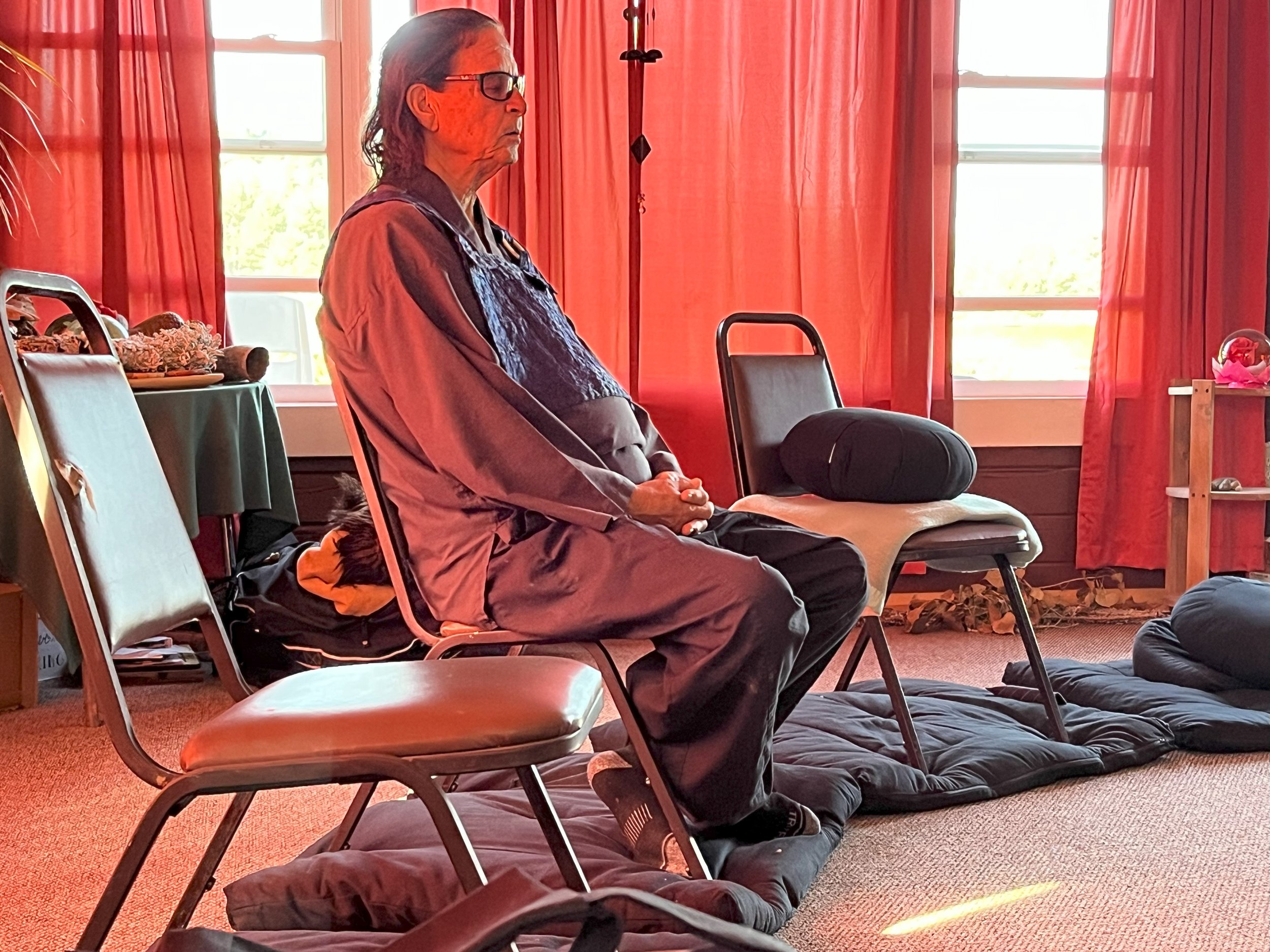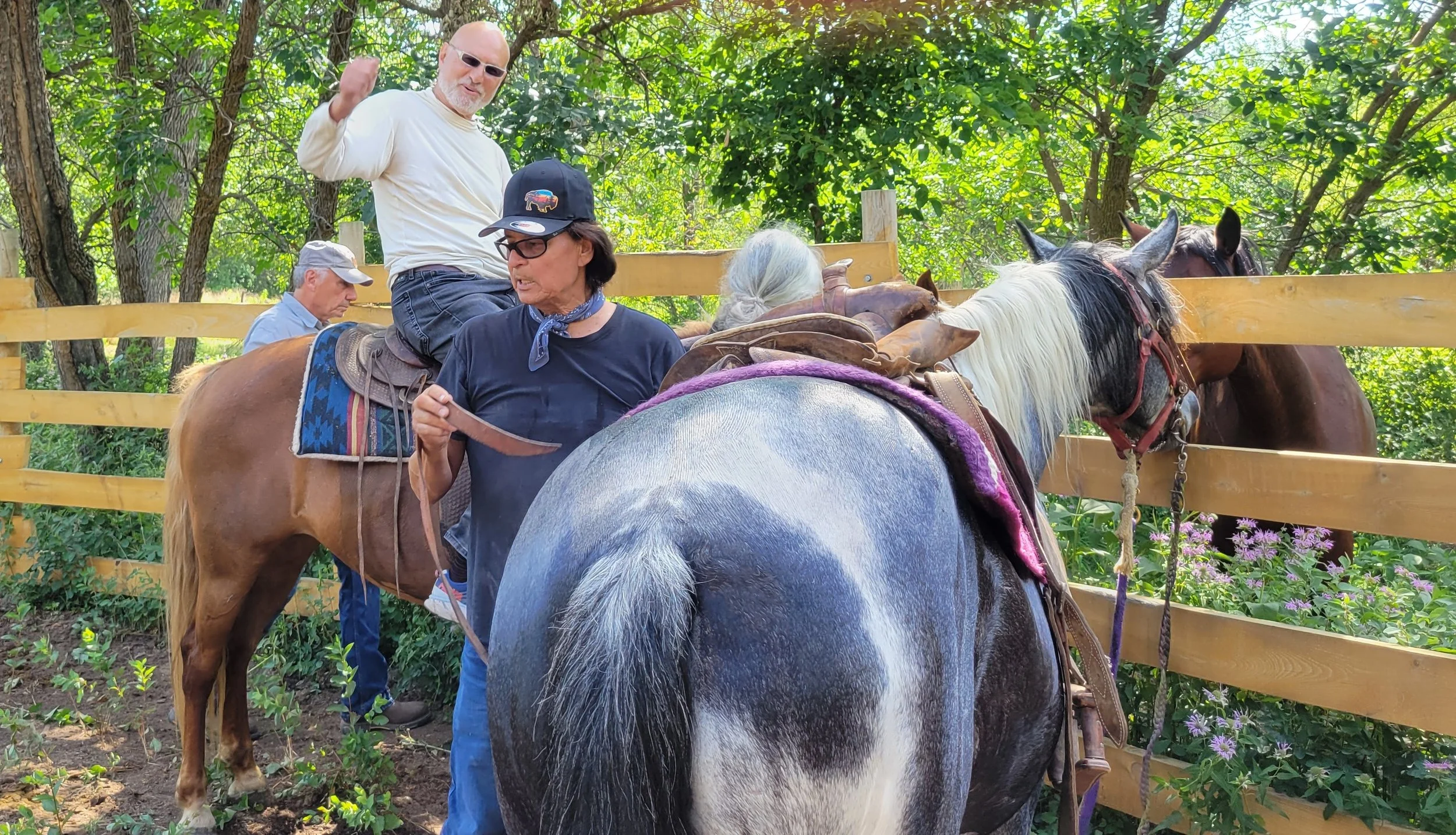We Can Provide The Answers To Our Own Dilemmas
Koto Washi Dallas Chief Eagle
I met Koto Washi Dallas Chief Eagle on a Hollow Bones Zen sesshin in January of 2018. We were roommates and were challenged not to speak to each other, which we were only so so with following through on. Koto Washi is a elder in the Lakota Sioux Tribe living on the Pine RIdge Reservation. He and his wife Becky operate All Nation’s Gathering Center, a non-profit retreat center on their lend in Yellow Bear Canyon, outside of Kyle, SD. Together, they have been hosting our retreats annually since 2022, Koto Washi has taken on several significant roles at SBLMS as a dharma teacher and a member of the Board of Directors. I caught up with him on zoom recently to learn more about him.
Ekai: Welcome Koto Washi. Can you share with us what attracted you to the meditation practice of Jun Po Roshi?
Koto Washi: I did my first retreat over ten years ago. I had never sat so long in one spot, perfectly still. I wasn't used to sitting still. I was squirming and turning in my chair, trying to get comfortable. Then I noticed everybody else was sitting still and not moving. Sometime during the weekend, I turned off my mind. I knew that I was doing something I've never really done before.
I started to get a benefit from sitting still. I realized that this could help me in some of our ceremonies. I was thinking I need to learn how to manage my emotions. As I've grown I've noticed that I don't have to react to anything. I’ve got a place to go right here, right now. In any situation.
Ekai: How did you end up getting ordained by Jun Po Roshi?
Koto Washi: I start going to these weekend retreats. After about a yea, or two, I knew that I was experiencing a part of myself. As well, the community was the second group of people other than what's out here on the reservation that didn't want to make me something that I'm not. I didn't get ulterior motives coming from either Mankind Project or Hollow Bones Zen. I knew I wanted to be a part of this alliance. Together they have worked wonders for me. This started waking me up to a better part of myself.
Ekai: What was your relationship like with Jun Po Roshi?
Koto Washi: I went home from a retreat in California in 2018 and I started sitting like a stone. I knew the stone family was big in our culture. As I was developing the skills to sit like a stone I started bringing my little stone Buddha with me. I then I start familiarizing myself with the stones in my own culture, how they have helped our people. I found out that my culture, MKP and emotional koans all fit together. I shared with Jun Po Roshi a story I did with fifth graders about how I use the stone and the buffalo robe. He read it. At the next staff meeting he announced it was perfect. I felt I must be right on track here. The skills that I'm learning fit with my culture and with the groups that I'm operating witthin. It's enhancing not only myself, but waking me up to my culture, and to a bigger view of myself and the world around me.
Ekai: You’ve been teaching for a long time. Tell us a bit about your work. On the one hand you are sitting like a stone, but you're a traditional hoop dancer. What's the origins of your teaching?
Koto Washi: I went to school to be an artist. My undergraduate degree was in art education, K through 12. I wanted to learn everything that I could about the skills in art and how to use the materials all around me, drawing, sculpture, all of the fine arts. I found a lot of it worked for me. I could go to the Art Center and spend a lot of time building art projects. I wanted to be teaching art after I graduated. Then I started a master's program, because I didn't have the verbal skills that I wanted. I went to get a counseling degree. I wanted to be a more verbal person, to express my art as well. I was teaching at the Flandreau Indian School a boarding school.
Ekai: You were dancing way before that.
Koto Washi: Yeah, I got on the South Dakota Arts Council 30 years ago to do my performing arts. I did my hoop dancing, teaching and performing at different schools and festivals. Pretty soon I was doing this full time. Then I started a program called People Plant Animal Performing Arts Association. I'm doing it now again. Originally I collected birds. I had seven pigeons. They could roll this way, on the floor, in the sky. I had a puppy from Dances with Wolves and a little baby wolf. And then I had my little dog that we dressed up as a skunk. I was collecting trees photos as well. So People Plant Animal Performing Arts Association had a whole series of slides. And now I'm collecting the slides again, after 25 years, I'm collecting my birds again, getting my animals together. I only did that for two years. I traveled all over the Cheyenne River Reservation. We did hoop dancing, nd then I had my birds and my four legged one and my rooted creatures and my slideshows. Everybody just enjoyed it. I have decided I could I could do that again.
Ekai: Looking forward to seeing that project come to life again. But you started dancing way before that.
Koto Washi: I traveled around with my grandma and grandpa. They had old station wagon back then. I was their little Indian dancer. And while we were traveling, I saw this hoop dancer. I wanted to do that. So when we got home, my dad and my grandpa put some hoops together. Five of them. And then I started doing it ever since I was ten years old. It’s so awesome to see someone dance was via hoops.
Ekai: How did All Nation’s Gathering Center come about?
Koto Washi: That was about the time that Becky and I got together. About ten years ago. She was working with girls. I was working with boys. We decided to just combine horses and build an environment where we could share our culture and teach both the boys and girls. Our place allows us to practice our ceremony. We have weekly lodges and so forth. It wasn't called All Nations Gathering Center originally. That name came from our elders at a ceremony.
Now, all the skills that I've learned from Jun Po Roshi have really benefited me and really complements the teachings in our culture. Everything from the past fits together really nicely as we continue to grow and evolve that well. Now we are having these retreats with you and Fugen Roshi. My daughter Dallecina has joined us and she brings a whole lot of skills with the horse. She's has a wonderful relationship with horses, showing so much patience and taking those horses where they're at. What we saw in the last two retreats was there's a comfortable zone that we can develop where the both people and horses, learning how to be peaceful and calm. We find this beautiful place where we can really forget about our problems.
Being able to assist someone else in finding their truth and not putting your truth on them. Allowing them to find that truth. You're there to help someone else. We want to be invited into sacred space and not step on it or provide the answers. We will want people to take ownership of their wounds, sacred space, and that that's what we do when we sit. There's a part of ourselves, a spirit inside of us that we want to own. We can go inward and provide the answers to our own dilemmas and problems or whatever we're facing in life.
Ekai: I appreciate where you landed and I love listening to the way you're able to embody the spirit of Jun Po Roshi’s teachings. You offer this wisdom to others so they can get their own. I'm thinking Jun Po would be very proud.
Koto Washi: Well, he knew me more than I knew myself.



